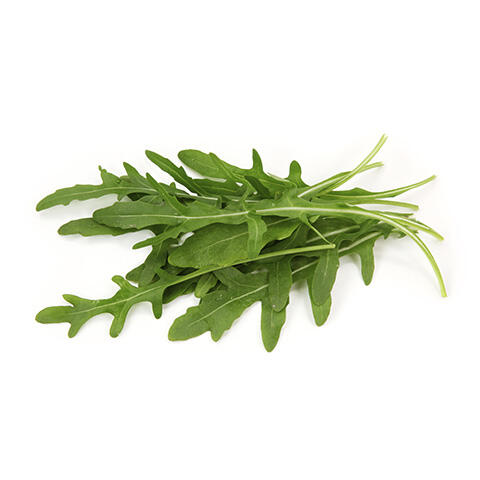You are here
Arugula

Markon First Crop (MFC) Arugula has peppery salad-like leaves that flavor meals for pennies per plate.

Product Details
Shelf Life:
Julian pack date.
Storage Temperature:
34°-36°F (1°-2°C)
Ethylene Producing:
No
Ethylene Sensitive:
Yes
Kosher:
No
Available Offerings from Markon for Arugula
| Description | Net Weight | Pack | GTIN | UPC |
|---|---|---|---|---|
| Arugula | 1 pounds or .45 kilograms | 2/.50# | 1 06 11628 91372 5 | 6 11628 91372 8 |
| Arugula | 1 pounds or .45 kilograms | 1 LB | 0 06 11628 91370 4 | 6 11628 91370 4 |
| Arugula | .50 pounds or .23 kilograms | .50 LB | 0 06 11628 91380 3 | 6 11628 91380 3 |
Storage Tips:
Keep in original containers; store at proper temperatures; keep away from ethylene producing items.
Handling Tips:
Handle as little as possible to reduce bruising and premature spoilage; do not wash until ready to use. Rinse whole fruits and vegetables in clean running water prior to using.
General Usage Ideas
- Mix arugula with chopped Granny Smith apples and candied walnuts; dress with pomegranate vinaigrette.
- Stir arugula and chopped tomatoes into lentil-sausage soup; serve with crusty bread.
Fall / Winter Usage Ideas:
- Line meatloaf sandwiches with arugula, roasted MFC Tomatoes, and roasted red pepper aioli
- Serve a hearty salad of arugula, roasted butternut squash cubes, brown lentils, and shaved Parmesan cheese
- Toss cooked penne pasta with roasted MFC Eggplant, chopped arugula, confit of RSS Peeled Garlic, and smoked mozzarella
Spring / Summer Usage Ideas:
- Toss arugula with chopped squid, cooked cannellini beans, chopped hearts of palm, and cherry tomatoes; serve with creamy lemon dressing
- Arrange watermelon chunks and arugula in the center of a salad plate; top with crumbled goat cheese, minced MFC Red Onions, and cubed mango; drizzle with a thick balsamic vinaigrette
- Serve open-faced BLTs with applewood bacon, arugula, and purple heirloom tomatoes; top with a fried egg
Did You Know?
Herbs are one of the oldest agricultural products. Egyptian records from as early as 2800 B.C. mention their role in food, medicine, cosmetics, perfumes, dyes and magic.




